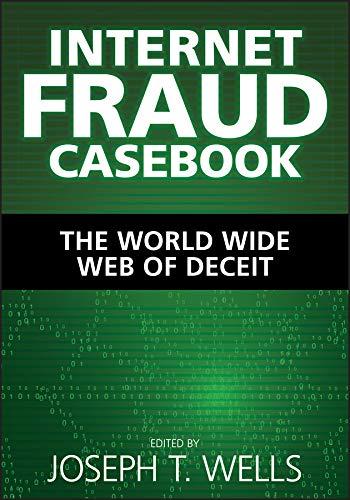Question
BOC has experienced no shortage of fraud orchestrated by management at all levels. One of the most spectacular schemes came to light in 2001, coinciding
BOC has experienced no shortage of fraud orchestrated by management at all levels. One of the most spectacular schemes came to light in 2001, coinciding with Chinas entrance in the WTO. In the process of improving their systems to comply with WTO requirements, BOC auditors discovered that amounts equivalent to half a billion U.S. dollars were missing from the banks accounts. Investigations led to a branch in Kaiping, a manufacturing town in the Guangdong province.
According to Hong Kong authorities, Xu Chaofan, mastermind of the scheme and a former general manager at the Kaiping branch, began illegal transfer and use of BOC funds in the early 1990s. While at the branch, he stole an estimated $400 million. Promoted to manager of the regional headquarters at Guangzhou in 1999, Xu Chaofan netted an additional $80 million in stolen funds by conspiring with two succeeding Kaiping general managers, Yu Zhendong and Xu Guojun.
In the 1990s, many mainland Chinese set up so-called window companies to speculate in stocks and real estate in Hong Kong, Chinas window to the world. The gang helped create two window companies in 1992; they then used the companies as vehicles to invest BOC funds and to pull in profits for themselves, as well as to divert stolen funds. Relatives of Xu Chaofan set up both companies, Ever Joint Properties and Yau Hip Trading Limited. On the surface, the window companies acted as investing arms of BOC Kaiping. However, no permission to remit these funds abroad was granted by a BOC senior branch manager. Some funds from Ever Joint were funneled to a third organization the gang had created, Land Galaxy Limited, which paid salaries and expenses incurred by the gang, whose members had created false Hong Kong identities for this purpose. Ever Joint funds also were moved to other accounts controlled by the gang at casinos and elite financial institutions in Hong Kong and in other countries. The gangs typical fraudulent transaction was a bank loan. BOC funds were remitted to Ever Joint in Hong Kong mostly by means of false information purporting to show loans made to intermediary companies in Hong Kong, although there was no genuine business between Ever Joint and these intermediaries. Ever Joint funded the purchase of three expensive Hong Kong apartments for the gang. Monies from the window company were invested in real properties, stocks, index futures, and foreign exchange. Some investments apparently met with disastrous results in the wake of the real estate and stock market crashes of 1997. Ever Joints biggest stock position was in Leading Spirit High-Tech Holdings Company Limited, a Chinese stock that plunged 99 percent from its 1997 high. The gang also bought and suffered great loss from a stake in tycoon Richard T. K. Lis Pacific Century CyberWorks Limited. They also deposited large sums into accounts controlled by themselves, their wives, and their relatives at casinos in Macau, Australia, and the United States (Clifford et al. 2002).
Since the bank managers had insider authority to make loans and transfer funds without controls, the stolen funds went unnoticed by BOCs information system and auditing processes for some time. Lax supervision and the proliferation of non-performing loans also provided a mask, hiding the theft. The managers could further resort to accounting gimmicks to cover their tracks. A major auditing weakness at the time was the systems inability to clear and verify a large number of accounts simultaneously, leaving a window of a couple of days for bank managers to transfer funds from account to account to camouflage shortages.
In October 2001, coinciding with Chinas entrance to the WTO, a change at BOC in the structure providing for the transfer of funds and centralization of information helped auditors discover discrepancies in the accounting books of BOC Kaiping. On October 13, 2001, BOCs auditors examined the accounting records for that branch and found that a huge sum of money was missing.
1. What would you require to monitor the destination of the funds and the incorporation of companies? 2. What forensic auditing techniques would you use to document fraud? Detail how you would use them. 3. What elements of internal control failed at Bank of China? 4. What kinds of anti-fraud programs would you establish at Bank of China? 5. Describe how the fraud triangle developed at Bank of China. 6. Please state whether in your opinion, there was a failure to document any fact by the Bank of China auditors.
Step by Step Solution
There are 3 Steps involved in it
Step: 1

Get Instant Access to Expert-Tailored Solutions
See step-by-step solutions with expert insights and AI powered tools for academic success
Step: 2

Step: 3

Ace Your Homework with AI
Get the answers you need in no time with our AI-driven, step-by-step assistance
Get Started


